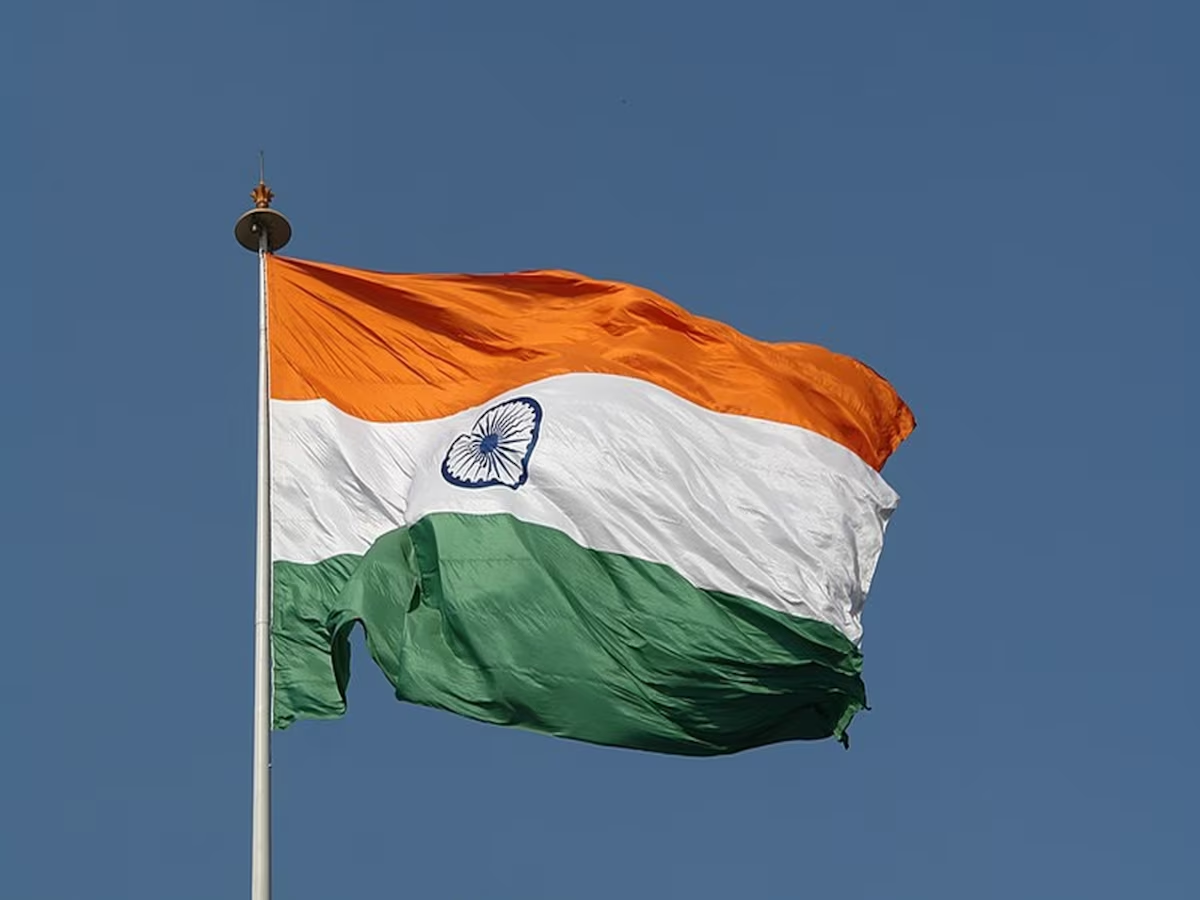
*New Delhi.* Even after 77 years of independence, why are the weavers who crafted the first Indian flag and the Khadi stores that encouraged them not being honored? This question resonates with a deep sense of pain among the generations of freedom fighters and every patriotic citizen of the country.
Among the 140 crore citizens of India, only a few might be aware that the tricolor flag hoisted by the country's first Prime Minister, Pandit Jawaharlal Nehru, on the historic morning of August 15, 1947, at the Red Fort in Delhi, was made in Aluda village of Dausa district in Rajasthan. However, to date, there has been no official confirmation of this fact by the Government of India. It is believed that for the preparation of the first flag for Independence, the responsibility of bringing the flag was given to Deshpande and General Todd of the Charkha Sangh. According to those who witnessed the events, samples of three flags were brought from different parts of the country during that time. One flag came from Aluda village in Dausa district, another from Govindgarh in Alwar district of Rajasthan, and a third from another location. It is said that the flag made by the weaver Chauthmal of Aluda town in Dausa was the one hoisted for the first time by the Prime Minister at the Red Fort as the national flag. However, there is no written evidence available to support this claim.
The Khadi Committee of Dausa also asserts that although samples of the tricolor were brought from other places in the country for the flag that was hoisted on the first morning of Independence at the historic Red Fort in Delhi, the tricolor made in Dausa was given the honor of being the first to be flown from the Red Fort. Since then, Dausa district in Rajasthan has been historically associated with the Indian flag. The craftsmanship of the weavers in Dausa in making flags continues to this day. On Independence Day, the tricolor is hoisted in every district across the country. Citizens feel proud on this occasion, salute the tricolor, a symbol of the country's pride, and remember the martyrs of independence. Citizens of Dausa district in Rajasthan experience a unique feeling on this day because of the special connection believed to exist between their district and the first flag hoisted at the Red Fort in Delhi.
There are three prominent places in India where the fabric for the tricolor flag has been traditionally manufactured: Nanded in Maharashtra, Hubli in Karnataka, and Dausa in Rajasthan. The Khadi Committee in Dausa was responsible for manufacturing the fabric used in the tricolor, which was then sent to Mumbai, where the Khadi Dyers and Printing Press would imprint the tricolor on it. It is said that the flag hoisted by Pandit Jawaharlal Nehru at the All India Congress Committee session just before Independence was also stored at the house of Anju Nagar in Meerut (Hastinapur), a native of Neemrana in Alwar district, Rajasthan. According to her cousin Tarun Rawal, this flag was hoisted at the last Congress session in Meerut in 1946. The Nagar family has preserved this historic flag, which is 14 feet wide and 9 feet long, with great care.
The Indian tricolor flag has a unique prestige. It has established its distinct identity worldwide. In every field, from the Olympic Games to other achievements, our tricolor proudly flutters along with the melodious tune of the national anthem. With the success of Chandrayaan-3 under the Chandrayaan mission, India has also had the honor of proudly hoisting its tricolor on the moon.
Prime Minister Narendra Modi launched the "Har Ghar Tiranga" campaign in 2022, marking the 75th anniversary of India's independence. This campaign, which began on July 22, 2022, has engaged millions of people.
According to Union Culture Minister Gajendra Singh Shekhawat, more than 23 crore households hoisted the national flag in 2022, and 6 crore people uploaded selfies with the flag on harghartiranga.com. In 2023, over 10 crore people uploaded their selfies as part of the campaign. The campaign received tremendous support not only in India but also abroad, where the world's famous buildings were seen bathed in the attractive light of the tricolor. The Indian diaspora also showed great enthusiasm for the Har Ghar Tiranga campaign.
On Thursday, the entire country will celebrate the 78th Independence Day. Prime Minister Narendra Modi will hoist the tricolor from the ramparts of the historic Red Fort in New Delhi and address the nation. He has named the 75th anniversary of independence as the "Amrit Mahotsav." He has also launched the ambitious Central Vista project in New Delhi as a symbol of self-reliant India, above the remnants of colonialism, and inaugurated the new Kartavya Path and Parliament House. On the eve of Independence Day, President Droupadi Murmu addressed the nation.
In this Amrit Lal of independence, patriots who believe that the weavers of the first tricolor should be honored are eagerly awaiting the steps the central government will take in this direction. Let's see what measures the government will take to recognize them.